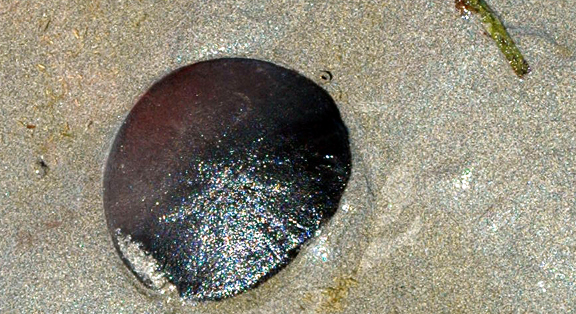
![]()

Photo 1: Sand Dollar at Stories Beach.
Sand Dollar: Dendraster excentricus
Common names: Pacific sand dollar, ecentric sand dollar
These echinoderms are almost always found in sandy locations with half of their disc buried in the sand. Sand dollars filter the sand for plankton and other organic matter. They are herbivores. Healthy sand dollars are covered with tiny black spines, which help them move about. On North Vancouver Island, they are commonly found at Miracle Beach and Stories Beach between Comox and Campbell River.
Photo 2: Sand Dollar Test.
The white shell (called its 'test') of a sand dollar. After a sand dollar dies the spines fall off and the test becomes bleached and smooth. In the center of the test, a 'five-petalled flower' is visible. This five-sided symmetry is common among echinoderms,

